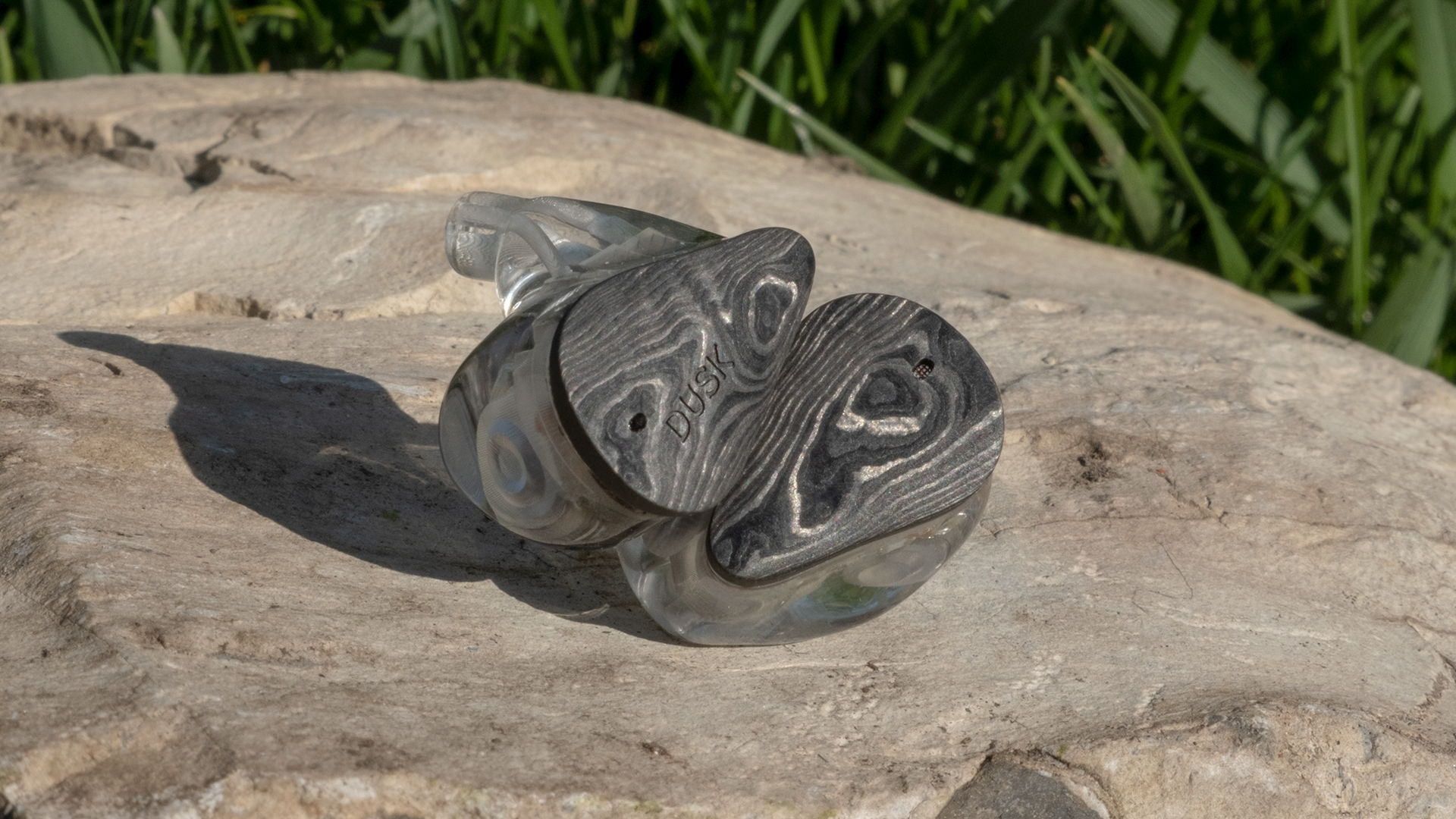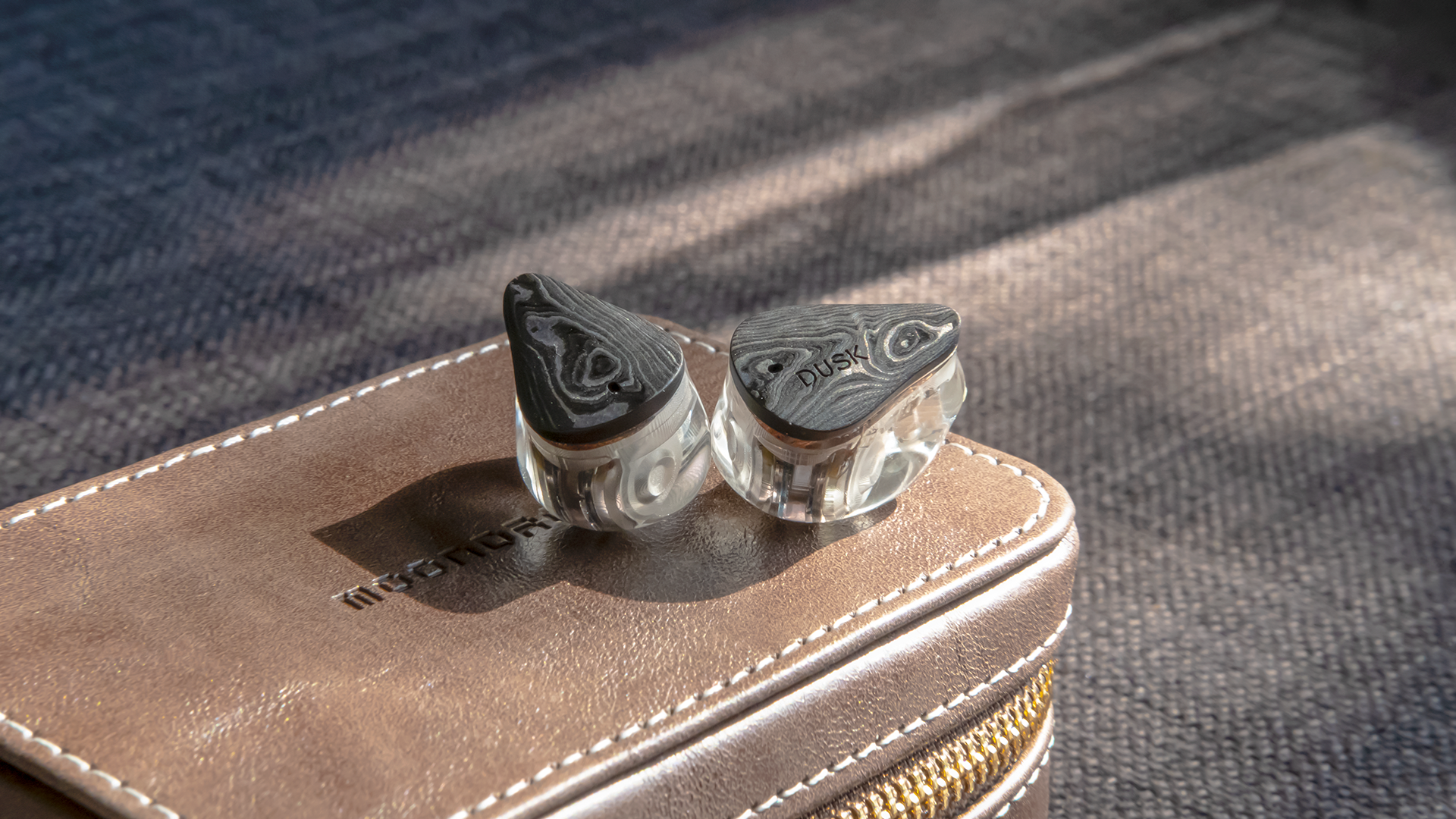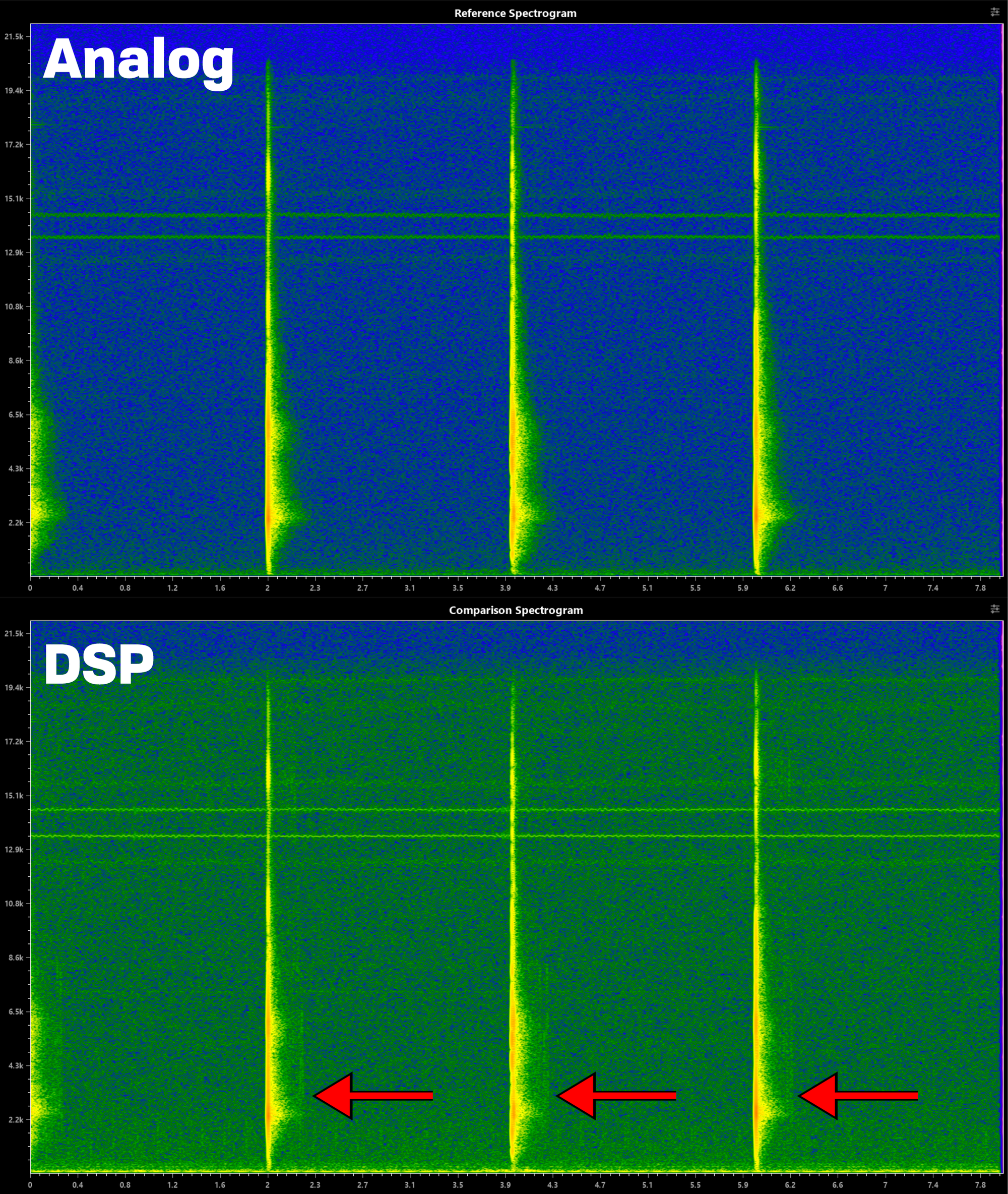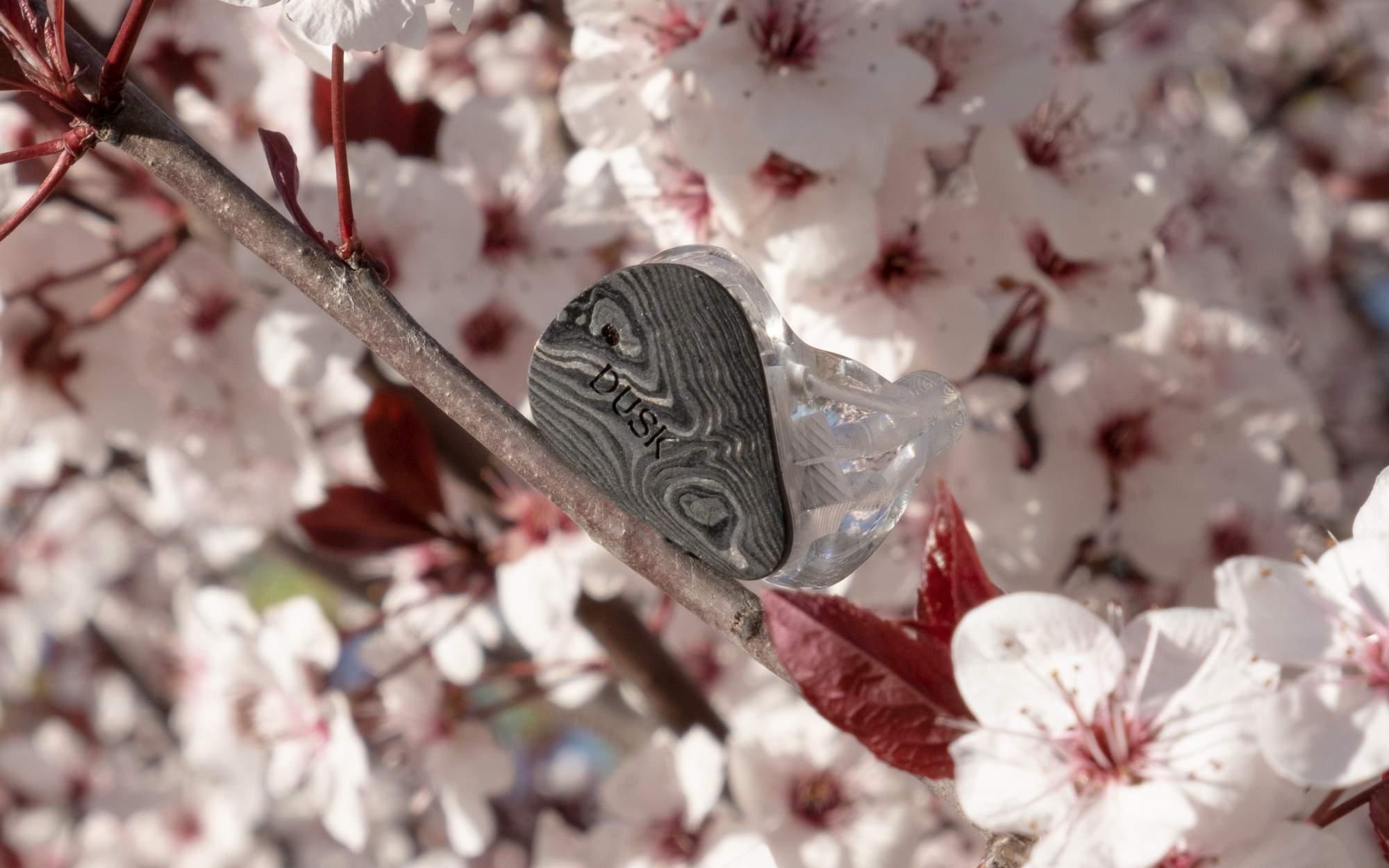Moondrop x Crinacle DUSK: An Inconvenient Truth
Crinacle's new DUSK was an IEM that was uniquely positioned to fulfill the wishes of consumers asking for an IEM tuned with the Brüel and Kjaer Type 5128 in mind. However, due to the reliance on the DSP cable to grant that wish, saying "Buy DUSK" isn't quite as simple this time around.

Before discussing the new DUSK, let’s talk about the original Dusk.
If one has spent any time in online IEM communities, they probably know about Crinacle’s first collaboration with Moondrop. The Blessing 2: Dusk was among the better-tuned options on the market, such that it was regarded as one of the safest recommendations people could give. It gatekept the $300 price bracket for virtually its entire time in existence, with nothing ever really coming close to dethroning it.
Blessing 2: Dusk was also the first major reviewer/brand collaboration that a lot of people bought or at least heard. In this way, Blessing 2: Dusk was extremely valuable for the discourse, as it allowed everyone to share a common reference point from which to judge and discuss other products. However, when we started to learn more about IEMs thanks to measurement data from the Brüel & Kjær 5128, the Blessing 2: Dusk—like most passive IEMs—began to show its age relative to where the market was headed.
Being at the forefront of IEM development himself, Crinacle took his knowledge of current industry-standard IEM measurements and resolved to put that knowledge towards his follow-up to the wildly successful Blessing 2: Dusk. The result is the DUSK, a product that was uniquely positioned to fulfill the wishes of consumers asking for an IEM tuned with the B&K 5128 in mind.
Full disclosure: I consider Crinacle a friend, and I’ve had details here and there about the DUSK’s development for months leading up to its release. Neither of these things mean I’m going to pull any punches, though. There were some choices made when it comes to DUSK’s release that I don’t quite agree with, and some choices that make perfect sense, but could’ve been executed better. Regardless, DUSK is the most anticipated IEM we’ve seen released in a long time, so without further ado, let’s get into it.
What we like
- Much more ergonomic and stylish than the original Blessing 2: Dusk
- Default DSP preset is among the best tuned out-of-the-box experiences in the entire IEM market
- Subjective performance is rather well-rounded when Default EQ is applied, though not with the DSP cable
What we don’t like
Design, Ergonomics, and Accessories
I was a bit confused when Crin posted his first picture of the DUSK, with its unceremoniously stamped branding in an austere wood-looking faceplate, but all it took was seeing it once in person to totally get it.
For one, the faceplate isn’t wood: it’s actually forged carbon fiber, which becomes obvious as soon as it catches the light and reflects more of a sheen than you’d expect from wood. It’s not flashy, but it’s also not entirely featureless. The faceplate contrasts the clear shell nicely but doesn’t look incoherent with the overall design language. It contributes to a well-considered visual design that catches your eye when you inspect it, but it isn’t nearly as ostentatious as other IEM designs out there.
The included accessories package is the first area I was a little disappointed in upon opening the box. On the plus side, we get a sturdy leather-wrapped zip case for the IEM, containing the two included cables. The 3.5mm-terminated cable is white and reminds me of a slightly more rubbery version of the Moondrop Variations cable. It’s comfortable enough for long-term use and not noticeably microphonic, but I would’ve been happier with something that felt a little more luxurious in the hand.

The more controversial offerings in the box are going to be the inclusion of the DSP cable (which we will get to) and the use of Moondrop’s spring tips as the stock tip for the DUSK. Ergonomically and visually I quite prefer the DSP cable to the 3.5mm cable, as it has a much more “DUSK-like” silver colorway and is both softer and less “sticky” feeling. However, I did notice that the DSP cable was meaningfully more microphonic in my testing.
Spring tips were always going to be a controversial decision, and I’m afraid I have to join the chorus of enthusiasts in saying that I really dislike this tip. It's incredibly compliant & foldable dome means that seating in a rig is incredibly hard to get consistent. This aspect—in addition to the texturing of the dome itself—means that in my ear I get both an inconsistent seal compared to other tips, as well as a slightly-changing treble response depending on how the tip has deformed with each seating. I would’ve much preferred a more traditionally textured and stiffer tip, as it would’ve minimized inter-seating variation and leak.
Overall, DUSK has an aesthetic and ergonomics package that is surprisingly good, certainly better than I expected given Crin’s last few releases. However, they could’ve done better regarding accessories. They definitely should’ve included another type of eartip, and a slightly nicer 3.5mm cable would’ve also been welcome.
Frequency Response: A Tale of Two DUSKs
With the DUSK, we get the choice of two tunings out-of-the-box thanks to the inclusion of the DSP cable which has the Default preset pre-loaded onto it (you do not need the app to access this tuning; it is plug-n-play). Both tunings are shown above against our preference bounds, first calibrated to the 4620 + Human DF HRTF baseline, then shown raw. I’ll evaluate both of them in comparison to one another, and my preference will likely surprise no one.
Bass
The bass is in my opinion the least objectionable part of this IEM. It falls in line with what we expect listeners to prefer thanks to Harman’s work, having a corner frequency in the neighborhood of ~100 Hz and a fair amount of boost. This bass shelf is also in line with what we’ve come to expect from Crin, as he's often tuned his bass shelves with roughly the same frequency & elevation in the past.
DUSK’s bass shelf cascades cleanly into the low mid-range without causing any weird stuffiness or muddiness. It provides the appropriate sense of weight and “pop” to kick drums, making the sense of moving air palpable, while lending the correct impression of size and fullness to bass guitars and deeper male vocals. The sub-bass extension is essentially bottomless (when you get a perfect seal, which isn’t a guarantee with the spring tips) and is incredibly satisfying and rumbly when listening to synthesized bass that goes low in frequency.
This is one area that Crin didn’t touch with the Default preset included in the DSP cable, and that makes sense to me. it’s about as close to ideal as you’ll get at this price and really doesn’t need changing.
Personally, I could do with a decibel or so less bass. That’s probably because I mostly listen at home, meaning my music often doesn’t need to compete with external noises. This is a very minor nitpick, especially because when I took DUSK on a plane this past weekend, I definitely appreciated the extra bass.
That being said, bass tuning has always been something Crin does well, and there’s really nothing to complain about here as a result. Par for the course, well done Crin.
Treble
If you’ve read my reviews before, you know that treble is where most IEMs and headphones disappoint me, and unfortunately the DUSK—in the analog and DSP configurations—doesn’t escape this trend. I tend to prefer roughly the amount of upper treble somewhere in the range that the 4620 + Human DF HRTF with a 8-12dB total slope calls for… and DUSK has quite a bit more treble than that in either configuration.
One thing I could see people enjoying about this treble emphasis—even though I don’t—is that acoustic guitars sound very lively, immediate, and dare I say, detailed. The “plucked” characteristic that many are a fan of when it comes to planar magnetic headphones is doubtlessly present here in the treble, so for those of you who want that, DUSK has it. However, I will reiterate this is not something I enjoy.
The analog version of the IEM specifically has way too much air for my preference. And when I say “too much,” I mean 12-14 dB of excess energy around 14 kHz. To call it unlistenable would be a stretch, but I had to significantly lower my listening volume to be able to evaluate the analog experience without wincing. It also has a 4-5 dB elevation in the 5-6 kHz region above my taste, but I didn’t notice this elevation because of how masked it was by the 14 kHz peak.

Vocals sound incredibly breathy and wispy to me in the analog version. Not necessarily in a “sibilant” way that highlights S, F, and T sounds, but in a way that colors nearly every word because it emphasizes the sound of any air that happens to escape the vocalist's mouth.
Snare drums have their chains over-emphasized compared to the shell resonance, sounding entirely focused on buzz and rattle. Hi-hat cymbals (especially when played open) sound hashy and thin, overpowering most other instruments in the mix with the sheer amount of air, almost sounding like white noise. Ride cymbals sound meaningfully tilted away from the “thocky” attack of the stick hitting the metal surface of the cymbal and towards the airy, splashy decay.
Thankfully, the Default DSP preset takes two steps in the right direction towards making DUSK a more listenable experience for me. Its greatest strength is its lower treble region, which dips the 5-6 kHz elevation to be right around where I generally like it. This helps lessen a bit of the edge of snare drums from sounding too chalky and buzzy, as well as reduces instances of harshness on vocals and guitars.
Crin also cut the 14 kHz resonance slightly with the Default DSP preset, which puts it closer to where I gather most will like it. It certainly makes it more listenable for me, even though its still not cutting quite enough. Most of my complaints regarding the analog version’s upper treble still remain in the Default DSP preset to some extent, just to a lesser magnitude.
This upper treble peak was likely kept intact for a few reasons. Obviously, ear canals and eardrums of listeners will vary such that you don’t want to go too far in any one direction. But people spending $360 for an IEM might’ve also felt like DUSK was “low res” if this elevation wasn’t kept where it was.
While for some, this preset likely puts DUSK’s treble right where they want it, it leaves me more unsatisfied with the out-of-the-box experience than I'd hoped. This is an area I gather is intensely personal though, so I won’t dock too many points for Crin making the same choice most manufacturers make (too much air) in an effort to keep a sense of subjective clarity and focus to the sound.
Midrange
Moving into the midrange, this is where we see our two DUSKs—analog and DSP—start to diverge significantly.
The midrange of the analog version of the DUSK looks rather similar to the original Blessing 2: Dusk, with its main similarities being a flat low midrange and an early upper midrange rise defined by a 1400 Hz bump. Recently, a portion of the community has come to regard this bump—a staple of Crin’s IEF 2020 target—as sounding unnatural. In fact, my earliest “reviewer” target was quite literally just IEF 2020 with this 1400 Hz elevation removed. Thus the analog version of the DUSK has a midrange that, frankly, isn’t to my taste.
The issues are most clear on vocals and stringed instruments. Vocals sound too heady, slightly shouty, and noticeably “clenched” sounding. Electric guitars sound like they’re playing out of a speaker cabinet a size too small, or with a Tube Screamer in the chain adding a feeling of forwardness. Acoustic guitars sound boxier and less enveloping than they would with a more emphasized fundamental region.
Pianos sound particularly tinkly in a “toy-like” way, with a midrange decay that is much too fast compared to the decay of the fundamentals. This makes the overall impression of the pianos in the mix somewhat disjointed. Horns are the biggest offender in that they almost always sounded too aggressive and honky for me. This is likely because the bulk of their energy resides in the 1-2 kHz area anyway, which is then being further boosted by the IEM’s midrange tuning.

The Default DSP preset however, shows that you can fix all of these issues with a single negative EQ filter centered right around 1400 Hz. Plugging in the DSP cable ends up turning DUSK’s rather cold and unappealing midrange into one of the most natural, effortless midrange presentations on the market at any price.
Vocals sound much more reasonable, losing the honky and clenched character they had prior. Guitars sound warmer and more correct in overtone balance, having both good perceived size as well as more perceived decay. Snare drums have noticeably less “bark” and sound much more “phat” and well-rounded. Horns, pianos, strings, you name it; everything in the midrange just sounds better with the Default preset to me.
DUSK’s midrange with the Default preset is incredibly hard to fault, such that I think it alone justifies the DSP cable’s inclusion in the package… or it would, if the DSP cable wasn’t this IEM’s “Achilles Heel”.
Moondrop’s FreeDSP Sucks
I was beyond excited when I heard Crin was including a FreeDSP cable with preloaded EQ for out-of-the-box use with DUSK. He was potentially ushering in an era where DSP cables help passive IEMs compete with TWS IEMs that have been using DSP tuning for years.
However… what we got was not exactly that. And while that’s not Crin’s fault, it still meaningfully hampers DUSK’s value proposition.
For all of the praise I’ve given to the Default preset’s improvements to sound quality, many readers who try DUSK are going to forget all of that praise once they encounter how uniquely bad a package the FreeDSP cable is. I cannot emphasize it enough: Moondrop’s FreeDSP cable—in its current iteration—is somewhere between “incomplete” and “malfunctioning”.
Cameron (GoldenSound) has already done excellent video and written reviews of the FreeDSP, so I’ll try to keep this analysis to things that were solely relevant to my experience using it with the DUSK.
Minor Problem #1: No iOS or PC/Mac App Compatibility, No Directions
The DSP cable is USB-C only, with no iOS or PC/Mac app compatibility. As one of the ~60% of Americans using an iPhone, I literally could not evaluate any of the features of the application on my own. I had to ask a friend to install the app onto his Android phone to be able to use the cable.
The app itself isn’t available on the Android store, so I had to manually install it from Moondrop’s website as an APK. If I wasn’t active in certain communities, I likely wouldn’t have known where to look for it because there’s nothing in the box that tells you where to get the correct software. Upon installation, the app asked for an uncomfortable amount of access to the rest of my friend’s file system. But after accepting, we arrived at yet another problem.
Minor Problem #2: Any Parametric EQ change you make does not stack on top of the default—or any—preset
If you enjoy an included preset for the most part, but want to make a small adjustment to make it more preferable, you can’t just add a single filter on top of said preset, you need to rebuild the entire preset manually and then make adjustments on top of that.
Thankfully, Crin posted all of the filters for the included DSP presets so people could do this, but this design choice adds another layer of necessary “hands-on” customization that I gather many people aren’t going to want to bother with on a $360 IEM.
Admittedly, this isn’t a huge issue for me. The fact that the cable stores the EQ on it for use across devices means I’d only need to set it once, and I’m fine with that.
In fact, if the “EQ stacking” issue and OS incompatibility were the only problems, I think I’d still be okay with the DUSK’s reliance on the FreeDSP cable for its intended sound. It would take a little planning and a few minutes of time with a friend’s Android phone, but once I got everything sorted it’d be smooth sailing from there… right?
Big Problem: FreeDSP has an audible, signal-dependent digital noise issue
This one is a huge bummer, and it’s why I have no choice but to admit to myself that I’ll probably never use the included DSP cable again, and thus never get the benefits of DUSK that I was so excited about prior to release.
The FreeDSP cable has an audible noise issue that is mostly noticeable with non-continuous signals.
I first noticed this noise while listening to Radiohead’s “Weird Fishes/Arpeggi.” The song begins with a 4-count of stick clicks before the drum kit begins the song in earnest, and these clicks had a weird “squelchy” digital artifact that followed each click for about a quarter of a second. I was able to record this artifact using the DUSK with a controlled stimulus (snaps recorded in Logic Pro).

Andrew (Resolve) was able to verify the existence of this issue on their “DUSK-SP” cable as well, and after asking around many had noticed this issue with both FreeDSP and the DUSK-SP cable. Cameron was able to analyze the audio files I provided and make a visualization (above) for those who are curious to see the artifact visually represented, as well as verify it was happening with his own FreeDSP cable which he received and reviewed months ago.
I think this issue escaped both Moondrop’s as well as Cameron’s initial measurements of the FreeDSP for two reasons:
- The noise seemingly becomes more prominent when the signal is below 0dBfs (full volume). When testing DACs and amps for qualities like signal-to-noise ratio, we generally test them with signals at 0dBfs to show a best-case scenario of signal… but in this case, the issue is mostly apparent with stimuli below 0 dBfs. This is also unfortunately where most people are going to be listening.
- It is a time-variant defect, which means testing with traditional steady state signals like a continuous sine-wave wouldn’t show the issue.
The FreeDSP cable injects spurious noise into the signal that may be more apparent in recordings with higher dynamic range. As someone who listens to a fair bit of jazz, classical, or otherwise high dynamic range music, this makes the DSP cable a meaningfully flawed device for anything resembling high-fidelity reproduction. It’s unfortunately noticeable enough on my unit that, for me, it becomes really hard to recommend the FreeDSP cable to many people.
However, if a potential buyer only listens to music with low dynamic range—metal, pop music, and hip hop being common examples—or only uses the IEM in environments where the artifact would be masked by environmental noise, I could see the DSP cable’s issues not being ruinous. I listen primarily at home & to myriad genres of music that do include high dynamic range selections, so unfortunately it does really ruin certain songs.
This also means that for any evaluation of the subjective performance of the IEM, I don’t feel I can judge it properly using the included DSP cable. Seeing as it audibly affects perceived dynamic range, I can’t properly evaluate dynamics with it. For this reason I’ve decided I will only judge DUSK in Analog configuration or with my preferred DSP preset (Default) applied in separate software sans DSP cable.

Subjective Impressions
In the analog mode I’m afraid I don’t find DUSK’s subjective performance all that special except for one thing: sub-bass tactility & dynamics. I don’t necessarily know if it has to do with DUSK using two dynamic drivers instead of one for the low-end response, but with bassy music especially I found DUSK to be downright exceptional in the perception of sub-bass extension and tactility.
Even in the analog mode, bass instruments of all sorts still sound awesome despite the upper midrange being a bit too forward & tilting things towards a slightly faster decay. The feeling of “pumping” that one gets from a well-sidechained electronic or house mix was especially satisfying on DUSK in either configuration.
In terms of dynamics in the midrange, I felt DUSK was roughly on par with the original Blessing 2: Dusk, in that it was neither amazing nor terrible. A little bit on the lighter and tighter side for my taste, instead of being heavy and lumbering, but not egregiously translucent or anything. However, the excess treble from the planar tweeters on DUSK does make the slam and impact less hefty, noticeably softening and thinning the transients.
The Default preset ameliorates the slight dynamics deficiency in the mids, helping things decay more naturally while making transient attack less homogenous. However, it didn’t 100% fix the thinness of transients, likely due to there still being excess treble to my ear.
Moving onto what some people call “soundstage,” I found the DUSK in analog mode particularly poor for this aspect. The slightly forward midrange brings vocals and stringed instruments closer to my eyes than they should be, but the main issue is the upper treble. It being roughly 12-14 dB north of neutral for me means cymbals and acoustic guitars are perceived as very close, as well as pushed to the center of the mix. This is a result of treble peaks actually being an impediment to accurate imaging for me, which I’ll try to explain.
If a cymbal has 3 dB more energy in the mix on the right channel than the left channel, it will sound panned to the right… but if the transducer has a sufficiently big treble peak, it can be hard to discern a 3 dB difference between the channels. Personally, I have trouble discerning between a 12 dB peak and a 15 dB peak: too loud is too loud. Therefore, if a headphone or IEM has a peak that makes it harder to discern the volume difference between channels, this means the image drifts towards the center. Panning is volume difference, so when the perceived difference goes away, so does the panning. DUSK in analog mode—to me—sounds almost mono at times for this reason.
The Default preset yet again almost entirely fixes this, and I dare say it does an even better job of fixing the soundstage than fixing the dynamics. The midrange and lower treble filters do an excellent job of helping the midrange elements not be as cloyingly close and sound more spaced out, while the upper treble filter helps with discerning the level differences between left and right more easily, and thus assists image placement in sounding more natural and panoramic.
Comparisons
I’ve deliberately avoided making too many comparisons to other IEMs in this review because I don’t have many comparable IEMs on hand right now. If you want a more comparison-focused review, keep an eye out for Caleb’s forthcoming comparison review with the Blessing 2: Dusk and Blessing 3.

Conclusion
I’ve written at considerable length about the exact direction I think IEMs should be going and why. Simply put, I don’t think the Analog version of DUSK fills any huge holes in the current market. It is broadly in-step with the kind of things we’ve been getting for a few years now, from Crin or otherwise.
However, just because the Analog tuning fits rather neatly with the older paradigm of tunings, doesn’t necessarily make it poorly-tuned. Most of Crin’s IEMs tuned like this are within the realm of “reasonable enough” such that many people are happy to recommend them. I know for a fact that many people will prefer it in stock form.
But I find the Analog version of DUSK to be almost exactly the opposite of what I prefer in IEMs above 500Hz. For that reason, it’s hard for me to wholeheartedly recommend it, except to those who enjoyed the sound of the older tuning paradigm, but also want more “treble extension” than many of those sets had.
This is where the DSP cable would’ve really, really come in handy for my personal enjoyment and judgment of the product. Full credit to him, Crin clearly knew what people like me wanted, because the tuning changes contained in the Default preset made DUSK become one of the best-tuned IEMs out there… and that’s why the litany of issues with the DSP cable is such a monumental bummer.
Moondrop’s DSP cables have only been included with cheaper IEMs until now, like the Chu DSP and May. I’m going to go out on a limb and say the only reason they’ve gotten away with these cables being so flawed for so long is because the IEMs they come with are cheap. The problems are there, but people spending $60 for an IEM + a DSP cable and receiving something kinda janky aren’t (always) gonna make a huge stink about it being a poor value.
However, DUSK is not cheap. And the inconvenient truth is: by including FreeDSP, and relying on it to hit a specific tuning out of the box, they have effectively given DUSK cheap IEM problems.
I will reiterate that listeners don’t need to interface with the app to get the benefits of the Default tuning. For that reason, I could see many casual/on-the-go listeners not having any issues with the DSP cable due to the digital noise artifact being masked for one reason or another. But this issue is enough of a problem for me that I have serious reservations about recommending DUSK at the $360 price point until the issue is resolved, especially since that cable is precisely what gives DUSK the tuning that I’d pay $360 for.
I would love nothing more than to end this review by playing into the meme and signing off with a “Buy DUSK,” but this time it’s really not that simple. DUSK is an IEM I don’t really like in Analog mode (though some people certainly will), and while it has a much more preferable tuning for me with the other cable included in the box, said cable’s issues mean I’d advise most audiophiles against using it, at least for now.
If and when the noise issue with the FreeDSP cable is fixed, I will be amending this review in order to better reflect my opinion of what the DUSK would’ve been without the cable problems (and it would’ve been one of the best IEMs of the year)..
But currently, it’s much to my dismay that I personally cannot recommend the DUSK until the noise issue with the FreeDSP cable is fixed, except to the type of listener who will enjoy Crin’s 2020 target + extra air in Analog mode, or not mind the digital noise with the DSP cable.
